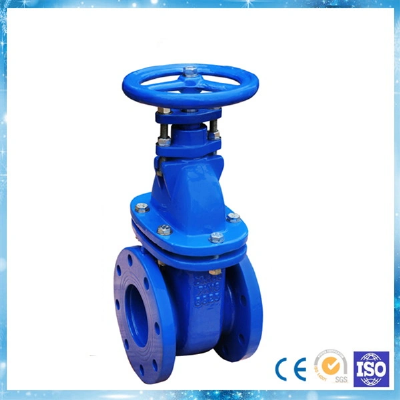What Are Globe Valves Used For? Otherwise known as control
valves, the role of globe valves is the regulation of flow media.
In addition, globe valves have also great sealing capabilities.
This also makes it a great device for sealing off water.
Applications for globe valves include:Fuel oil pipeline
systemsTurbine sealsHeater drain systemsTurbine lube oil
systemsChemical feed systemsWater systems that need regulated
flowHow Do Globe Valves Work? Water faucets are the best
example to show how globe valves work. Turning on the faucet means
raising or lowering the stem, depending on the design. Water then
comes out of the faucet. When turned to the other direction, say,
turned off, the raised gate is lowered or the lowered gate is
raised.The number of turns affects the volume of water that goes
out of the faucet. Similarly, by controlling the wheel of the
valve, a certain volume of gas or liquid passes through the valve.
A fully turned on globe valve means the flow rate is at its
maximum. On the other hand, a fully turned off globe valve means
sealing of the valve. Why Choose Globe Valves?
Good throttling capability Can be a shut-off
and on valve More variants in terms of body design, disks
and bonnet attachment styles Can be a stop-check
valveConsiderations When Buying Globe Valves #1 Valve Size
LimitationsThere is a limitation to the valve diameter because of
the internal pressure of the flow media. Globe valve manufacturers
limit the size to Nominal Pipe Size (NPS) 12 or Nominal Diameter
(DN) 300. Beyond these ranges, when under pressure, the valves may
not open or close easily. #2 Valve TrimsWhen dealing with
throttling and high pressure that is beyond 200 psi, valve trims
tend to fail. In situations like this, it is better to request a
specialized valve trim.#3 P-T RatingP-T rating refers to the rating
of the highest pressure and temperature ratio the valve can handle
in relation to the metal material.As temperature increases, the
capability of the body to handle pressure declines. In addition,
the seat material and design determine the overall rating.Most
globe valve manufacturing companies use the overall rating dictated
by ANS, ie. the body pressure rating at 100°F.#4 Medium TypeThe
medium type is one of the most important considerations when buying
a globe valve. There are many kinds of media which may or may not
be suitable for certain valve designs.For example, slurries are not
suitable medium as they are heavier and contain larger components
that could be left behind. These, in turn, can damage the disks.
Furthermore, such viscous material can create a huge pressure
drop.#5 MaterialMedium that flows in the valve correlates with the
material used in making the valve. Is the material used
corrosive-resistant? How concentrated is the flow material? Will it
be a flowing media condition? Or is it going to stop the media from
flowing? Answers to these questions directly affect the lifespan of
the valve. #6 Compliance With Industry StandardsBy following and
meeting industry standards, it maintains the integrity of the valve
as well as provide safety assurance.These would include
certifications and standards given by the following: The American
Society of Mechanical Engineers (ASME) American Petroleum Institute
(API) The Manufacturers Standardization Society (MSS) of Valve
Fittings Industry StandardsInformationASME B16.34Valves, Flanged,
Threaded and Welding EndASME B16.10Face to face and end to end
valve dimensionsASME B16.11Forged Fittings, Socket Welding and
ThreadedASME B16.25Butt Welding EndsASME B16.5Pipe Flanges and
Flanged FittingsAPI 623Steel Globe Valves - Flanged and Butt
Welding Ends, Bolted BonnetAPI 598Valve Inspection and TestingMSS
SP-25Standard Marking System for Valves, Fittings, Flanges, and
UnionsMSS SP-42Corrosion Resistant Gate, Globe, and Check ValvesMSS
SP-61Pressure Testing of ValvesGlobe Valve Types By Body Design
There are three main body designs for globe valves. Each has
unique designs suitable for particular applications.T(Tee) Pattern
Globe ValveThis is the most common design. Its distinct feature is
the Z-shaped diaphragm and that the seat lies horizontal and
perpendicular to the stem.This position allows low flow coefficient
but high-pressure loss. As a result, it is very suitable for
throttling applications not concerning with the pressure drop.Angle
Pattern Globe ValveThis pattern is an offshoot of the Tee Pattern.
Instead of linear motion, fluid passes through the globe valve in a
90° turn. This allows for a low flow rate that is suitable for
pulsating flow applications. As a result, it prevents
sedimentation.Y (Wye) Pattern Globe ValveIn contrast to the
previous two patterns where the stem is upright, the Y (wye)
pattern has a slanted 45° stem. This type of pattern has a lower
pressure drop than the previous two.When fully opened, the flow of
the media is more straight, hence the low-pressure drop. The wye
design, or Y style, is more common in a
Related products about Cast Steel Low Pressure/Forged Steel/Bellows Sealed Globe Valve
-
 Waste Tyre Plastic Recycling Machinery Machine Tire Crusher Production Line Rubber Crumb Grinding Machine Equipment Tire Shredder
Waste Tyre Plastic Recycling Machinery Machine Tire Crusher Production Line Rubber Crumb Grinding Machine Equipment Tire Shredder
-
 Stretch Plastic Blowing Pet Bottle Making Blow Molding Machine Bottles Stretch Automatic Pet Bottle Blowing Machine
Stretch Plastic Blowing Pet Bottle Making Blow Molding Machine Bottles Stretch Automatic Pet Bottle Blowing Machine
-
 Waste Plastic Pet Bottle, Water Bottle Flake, PP/HDPE/LDPE PE Film Jumbo Woven Bags Plastic Crusher Machine, Plastic Crushing Washing Recycling Machine
Waste Plastic Pet Bottle, Water Bottle Flake, PP/HDPE/LDPE PE Film Jumbo Woven Bags Plastic Crusher Machine, Plastic Crushing Washing Recycling Machine
-
 Type 2 Wall-Mounted Electric Car Charging Station 7kw /11 Kwelectric Vehicle Charging Station Home Wallbox AC EV Charger Single Phase or 3three Phase
Type 2 Wall-Mounted Electric Car Charging Station 7kw /11 Kwelectric Vehicle Charging Station Home Wallbox AC EV Charger Single Phase or 3three Phase
-
 G-View G12W Wholesale Auto Car LED Headlight Bulb High Power H13 H11 9005 H7 H4 Car LED Headlights LED Car Lights
G-View G12W Wholesale Auto Car LED Headlight Bulb High Power H13 H11 9005 H7 H4 Car LED Headlights LED Car Lights
-
 New Design Porcelain Round Plates Dinner Set for Wedding and Banquet
New Design Porcelain Round Plates Dinner Set for Wedding and Banquet
-
 China 2023 New Design Super Soft 100% Polyester Microfiber Knitted Oversized Decoration Hoodie Blanket
China 2023 New Design Super Soft 100% Polyester Microfiber Knitted Oversized Decoration Hoodie Blanket
-
 Handmade Art Creative Materials Thickened White Paper Cup DIY Disposable Handmade Colored Paper Cup
Handmade Art Creative Materials Thickened White Paper Cup DIY Disposable Handmade Colored Paper Cup






